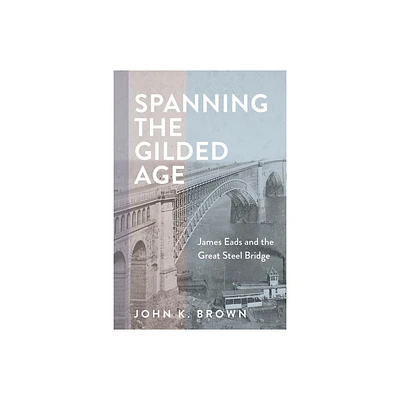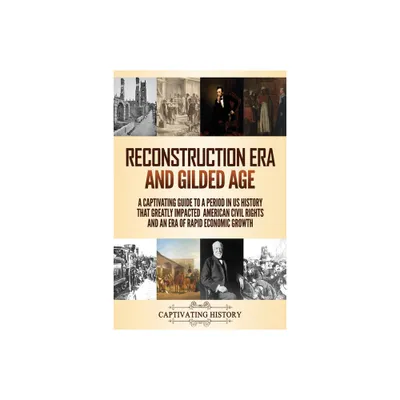Home
Spanning the Gilded Age: James Eads and the Great Steel Bridge
Loading Inventory...
Barnes and Noble
Spanning the Gilded Age: James Eads and the Great Steel Bridge
Current price: $34.95


Barnes and Noble
Spanning the Gilded Age: James Eads and the Great Steel Bridge
Current price: $34.95
Loading Inventory...
Size: OS
*Product Information may vary - to confirm product availability, pricing, and additional information please contact Barnes and Noble
The fascinating history of the St. Louis Bridge, the first steel structure in the world.
In
Spanning the Gilded Age,
John K. Brown tells the daring, improbable story of the construction of the St. Louis Bridge, known popularly as the Eads Bridge. Completed in 1874, it was the first structure of any kind—anywhere in the world—built of steel. This history details the origins, design, construction, and enduring impact of a unique feat of engineering, and it illustrates how Americans built their urban infrastructure during the nineteenth century.
With three graceful arches spanning the Mississippi River, the Eads Bridge's twin decks carried a broad boulevard above a dual-track railroad. To place its stone piers on bedrock, engineer James Eads pioneered daring innovations that allowed excavators to work one hundred feet beneath the river. With construction scarcely begun, Eads circulated a prospectus—offering a 400 percent return on investment—that attracted wealthy investors, including J. Pierpont Morgan in New York and his father, Junius, in London. This record-breaking design, which employed a novel method to lay its foundations and an untried metal for its arches, was projected by a steamboat man who had never before designed a bridge.
By detailing influential figures such as James Eads, the Morgans, Andrew Carnegie, and Jay Gould,
Spanning the Gilded Age
offers new perspectives on an era that saw profound changes in business, engineering, governance, and society. Beyond the bridge itself, Brown explores a broader story: how America became urban, industrial, and interconnected. This triumph of engineering reflects the Gilded Age's grand ambitions, and the bridge remains a vital transportation artery today.
In
Spanning the Gilded Age,
John K. Brown tells the daring, improbable story of the construction of the St. Louis Bridge, known popularly as the Eads Bridge. Completed in 1874, it was the first structure of any kind—anywhere in the world—built of steel. This history details the origins, design, construction, and enduring impact of a unique feat of engineering, and it illustrates how Americans built their urban infrastructure during the nineteenth century.
With three graceful arches spanning the Mississippi River, the Eads Bridge's twin decks carried a broad boulevard above a dual-track railroad. To place its stone piers on bedrock, engineer James Eads pioneered daring innovations that allowed excavators to work one hundred feet beneath the river. With construction scarcely begun, Eads circulated a prospectus—offering a 400 percent return on investment—that attracted wealthy investors, including J. Pierpont Morgan in New York and his father, Junius, in London. This record-breaking design, which employed a novel method to lay its foundations and an untried metal for its arches, was projected by a steamboat man who had never before designed a bridge.
By detailing influential figures such as James Eads, the Morgans, Andrew Carnegie, and Jay Gould,
Spanning the Gilded Age
offers new perspectives on an era that saw profound changes in business, engineering, governance, and society. Beyond the bridge itself, Brown explores a broader story: how America became urban, industrial, and interconnected. This triumph of engineering reflects the Gilded Age's grand ambitions, and the bridge remains a vital transportation artery today.


















